Wines of the Silver Land #181

A New Old Region
Meet “Wines of the Silver Land” – a unique terroir in Western Ukraine! While it boasts an ancient history, today it is shaping an entirely new identity thanks to the efforts of the Association of Winemakers, Viticulturists, and Distillers of Transcarpathia. The main goal of this emerging organization, which is in the process of being registered as a Geographical Indication, is to craft the portrait of the winemaking region – defining wine styles, descriptors, and ultimately, the image of the territory. In terms of size, Transcarpathia is one of the smallest regions of Ukraine. However, it is rich in remarkable landmarks and natural wonders: Lake Synevyr (the “Sea Eye of the Carpathians”), the breathtaking cascading Shypit Waterfall (one of Ukraine’s seven natural wonders), the Valley of Narcissus, thermal springs, stunning castles, and Ukraine’s only Lekvar (plum jam) museum. The majestic Carpathian mountain range runs through this region, home to all of Ukraine’s peaks over 2,000 meters. Additionally, the geographical Center of Europe is located here. Winemaking is deeply rooted in local traditions, with vineyards found in nearly every household. The “Wines of the Silver Land” association unites several dozen producers of wines and fruit distillates – known in France as eaux-de-vie.
History and the Origin of Its Name
Throughout history, this land has been known by various names, including Carpathian Ukraine and Subcarpathian Rus. At one point, it was even referred to as the “Nameless Territory.” However, the historical name Silver Land has existed for centuries – though, interestingly, it has no connection to silver deposits.
The name was introduced into public discourse by Ukrainian poet Vasyl Pachovskyi in 1920 when he retold a legend in his work. According to the story, during World War I, villagers in Boharevytsia (Berehove district) discovered a silver bell inscribed with: “1034. To the people of Silver Land from Queen Anastasia.” This suggests that the territory bore this name as early as the 11th century. A popular theory links this legend to Anastasia, the daughter of Yaroslav the Wise, who married Hungarian Prince Ondrash.
The region's enormous potential
There was a time when Transcarpathia boasted nearly 15,000 hectares of vineyards, and its wines were renowned across Europe. Today, estimates suggest that only 700 hectares remain under vine, with growth slowed by the ongoing war – expanding by just 10 hectares per year. However, the region holds immense potential. Fortunately, despite the challenges, a revival is underway. A key indicator of progress is the establishment of the Wines of the Silver Land Geographical Indication (GI). The designated area covers the southern part of the region, including Uzhhorod, Mukachevo, and Berehove districts, as well as small portions of Khust and Tyachiv districts. Future plans include registering the GI across the entire Transcarpathian region, followed by four additional appellations within this broader designation, each with stricter production criteria: Uzhhorod, Mukachevo, Berehove, and Ugocha (Vynohradiv).
Wines, Grape Varieties, and Winemakers
Silver Land has always been known as a region of white wines. The tuff rock formations impart a distinctive minerality to the wines, shaping the foundation and approach to winemaking here. Historically, the region has been influenced by European settlers. Italians from Udine and Germans from Swabia once arrived, bringing Rieslings and Muscats with them. This winemaking tradition dates back as far as the 13th century.
After the Battle of Mohács, the Ottomans brought their influence to the region, introducing grape varieties such as Furmint and Hárslevelű (Hungarian for “linden leaf”).
During the 16th and 17th centuries, the volcanic hills were planted with Juhfark (“sheep’s tail”), though unfortunately, this variety is no longer cultivated here. Another notable grape is Bakator, which researchers associate with the Hungarians – suggesting its presence in the region for around a thousand years.
The classic indigenous variety of Silver Land is Leánka, which translates to “girl.” Traminer has been cultivated here for several centuries and was famously used in the Soviet era to produce the renowned Troyanda Zakarpattia (“Rose of Transcarpathia”). With advancements in viticulture, several Central European white grape varieties have also taken root in the region, including Müller-Thurgau, Irsai Olivér, and Cserszegi Fűszeres.
Today, the winemakers of Silver Land are exploring new approaches to red wines, though the region is still in the process of defining its signature style. Among the grape varieties showing excellent results are Zweigelt and Kadarka, while Kékfrankos and Blaufränkisch hold strong potential. Several Slovak and Czech-bred varieties have also demonstrated impressive characteristics, including Dunaj, Saint Laurent, Regent, Hibernal, Dornfelder, and Gron. Winemakers are also placing high hopes on Krasen, a unique variety developed in Ukraine (Crimean selection).
The region’s two largest wineries are Chizay (272 ha) and Kotnar (180 ha), but it is the small boutique wineries that truly shape the wine tourism experience. Currently, there are 40-50 active small wineries, with another 30-40 in development. Among the most well-known are:
- Chateau Pauk – a traditional château offering a full range of wine tourism experiences, from wine tastings to regional culinary specialties. It boasts the largest vineyard in the region, covering over 30 hectares, and has earned the highest number of medals at the national wine competition.
- Chervona Hora Winery was founded by the Kritskyi family – father Emerig, son Oleksandr, and daughter Yaroslava. With over 20 hectares of vineyards, the winery is rapidly expanding both its vineyard area and its operations as a full-scale production facility.
- Nota Bene is the winery of the Nadj family, run by father and son, both named Vasyl. They cultivate around 10 hectares of vineyards and operate a unique cellar in the heart of Berehove, focusing on wines made from indigenous grape varieties.
- Shtyfko Wine Manufactory was founded in 2018 by Oleksandr Harnovdiy – a physicist and financier by education, but a winemaker at heart. He also serves as the head of the Association of Viticulturists, Winemakers, and Distillers of Transcarpathia. Shtyfko wines are well-known not only in Transcarpathia but also in other regions of Ukraine. The name Shtyfko originates from Oleksandr’s ancestors, who planted the first vine on their land. Though later generations carried different surnames, Shtyfko became a symbol of heritage and respect in the region.
- Sass K. Winery cultivates 10 hectares of vineyards and grows around 60 different grape varieties. Wine tastings are held in a cozy hall accommodating up to 48 guests, where visitors can sample up to 20 types of wine. The winery also produces fragrant vermouth. One of its greatest achievements is Black Rose – a unique wine infused with honey and prunes, which won a gold medal at the Berehove festival.
- Kovach Wines was founded by Oleksandr Kovach and offers wine tastings at the winery. Notably, it produced Transcarpathia’s first sparkling wine. In recent years, the winemaker has also introduced the production of pét-nats (pétillant naturel wines).
- Parászka Cellar (Parászka Pincészet) cultivates an astonishing 200 (!) grape varieties. The winery is run by brothers Gergely and László Parászka, who inherited the family business from their father, Yuriy, a recipient of the Wine Order of Saint Vincent. Gergely Parászka is also a member of the Association of Hungarian Winemakers of Transcarpathia, founded in 2018. Tastings take place in a cave carved into white tuff rock, where visitors can sample seven different wines, including ice wine.
The Association of Transcarpathian Winemakers is extensive, with too many members to list in full. However, some noteworthy wineries include those of István Bereczky, Erika Kovach (Erika Winery), Fedor Pavlyshynets, Serhii Kus, Tamás Kis, and the Muska, Fechora, Ursta, Varga, Biro, Polychko, and Kugutych families.
The association also includes the First Transcarpathian Palinka Distillery, which specializes in traditional, natural fruit distillates (palinka). Other notable distilleries in the region include Bírók Palinka, Transcarpathian Distillery Fayna Flyashka.
♥ ♥ ♥ ♥ ♥ ♥ ♥ ♥ ♥ ♥ ♥ ♥ ♥ ♥ ♥ ♥ ♥ ♥ ♥ ♥ ♥ ♥ ♥ ♥ ♥ ♥ ♥ ♥ ♥ ♥ ♥ ♥ ♥ ♥
A Glimpse into a Silver Future
Despite Ukraine facing the challenges of war, the winemakers of Wines of the Silver Land continue to plan and dream. Their vision is to establish a Central European Wine Hub – a platform for continuous networking and collaboration, where flavors, trends, and styles of the wider winemaking region, including Slovakia, Hungary, the Czech Republic, etc. will take shape.
Another key goal is to revive the history of the Silver Land and write a new chapter that future generations will take pride in. To promote the regional identity, the Association of Viticulturists, Winemakers, and Distillers of Transcarpathia regularly organizes a wine competition under the same name. The organizers have undertaken a massive effort to collect samples, encode them, and invite both national and international experts to participate in the tasting panels.
According to participants and reviewers, the competition was held to the highest standards. Judges used Gustos. Life, a blockchain-based software, ensuring transparency and accuracy in evaluations. In the most recent session, ten top wine professionals from Ukraine and Hungary assessed 113 samples from 32 producers.
Additionally, Wines of the Silver Land hosts the annual “Chervene Vyno” (Red Wine) Festival, a beloved regional tradition. Recently, they also launched artistic events at the museum of the world-renowned Ukrainian painter Yosyp Bokshai, often called the “Poet of the Silver Land.”
At the end of last year, Wines of the Silver Land, in collaboration with faculties of Uzhhorod University, introduced a unique educational program for university students, further fostering knowledge and appreciation of local winemaking traditions.
Photos provided by the winemakers of Wines of the Silver Land, with fragments of Yosyp Bokshai’s reproductions used from open sources (https://gs-art.com/): “Grape Harvest,” “Štrbské Pleso.”
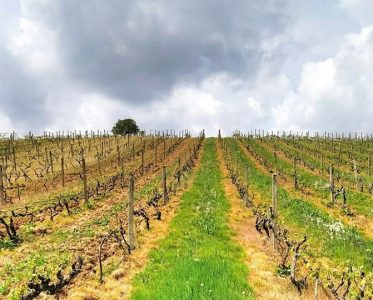
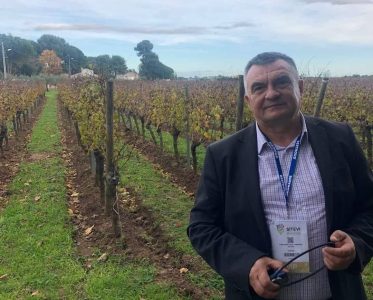
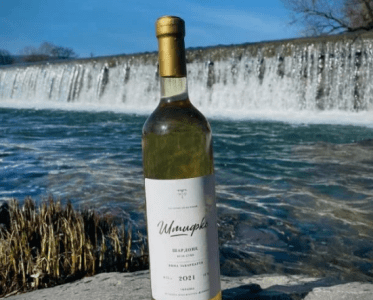
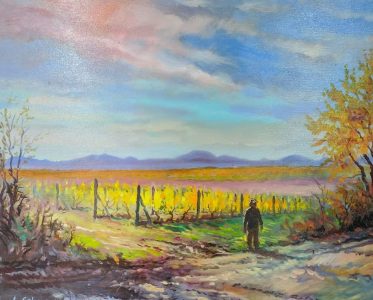

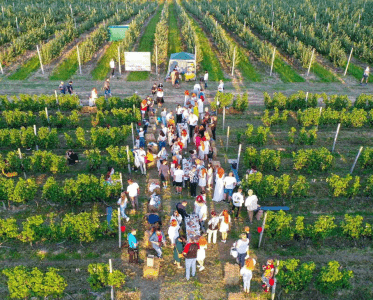
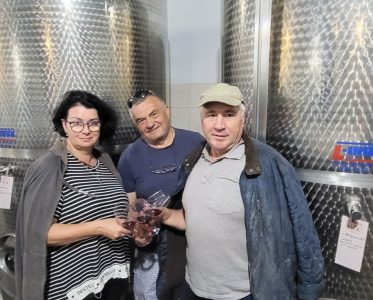
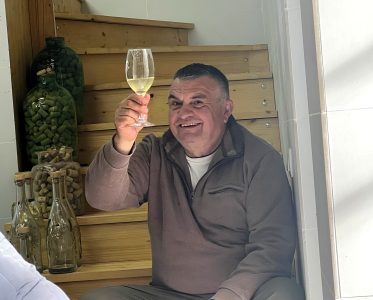
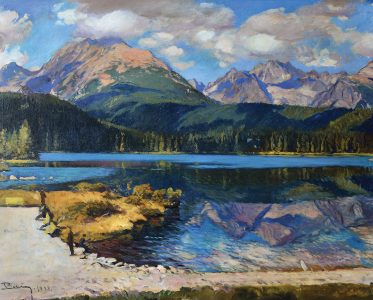
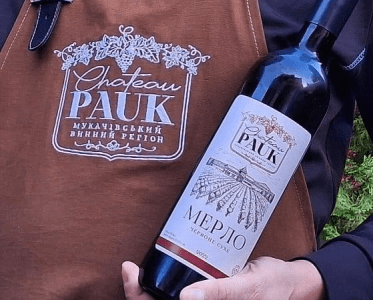
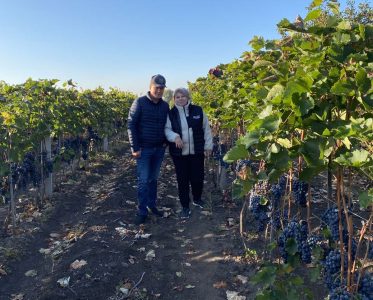
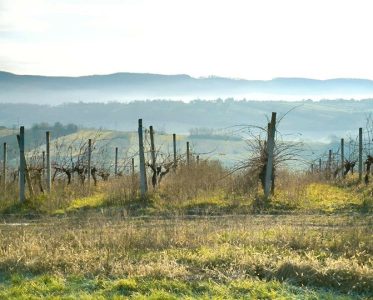
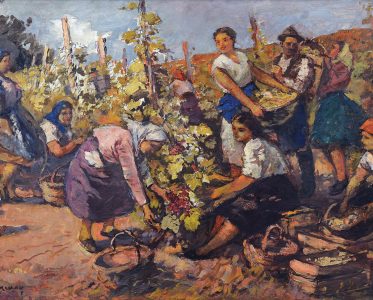
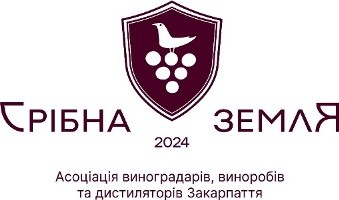


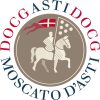







Reviews
Overall, the impression is very positive. This is not my first time chairing competitions in Transcarpathia I must note that the local pét-nats have already gained a strong reputation. Personally, I believe that Transcarpathia’s pét-nats can be considered exemplary. I can also confirm that many new names have emerged, and the purity and varietal characteristics of these wines are vividly expressed, with a growing complexity. For me, Transcarpathia can already be easily identified as the style of a distinct terroir.
I must note that the quality of both red and white wines from Transcarpathia has significantly improved compared to previous years. The reds had consistently clean aromas and flavors, with a pronounced fruitiness. In addition to the fruit notes, there is now excellent ripeness, and most importantly, the minerality of the terroir has truly developed.
I had the opportunity to get acquainted with Transcarpathian wines during a tasting in Budapest back in 2019 at an event called Pinceszer, and a year later, in 2020, while gathering material for my book Restaurant Guide to the Carpathian Basin. I believe the region has undergone significant changes and development in terms of the quality of both red and white wines. Overall, I see a promising future for this winemaking region.